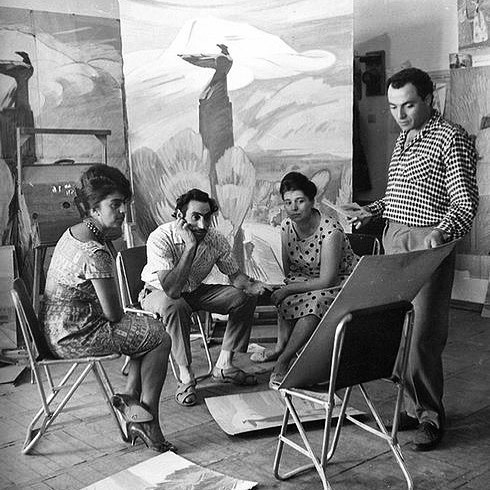Anush Titanyan

A recent graduate student from the American University of Armenia, former art curator of the “Akian” art gallery and a huge art enthusiast Liana Sahakyan, talks about the soviet politics and the exclusion of Armenian female artists from the pages of Soviet art history.
Many of us probably thought that if Soviet-Armenian women artists are not mentioned in textbooks or encyclopedias, so maybe there has not been any of them worth mentioning. Indeed, this is not the case, and it’s impossible to imagine art history without the incredible contribution of female artists, which, unfortunately, is frequently being ignored by the broad sector of society.
One of the main reasons for this phenomenon is the Soviet gender politics, which is:
- gender stereotypes
- demographic changes
- the understanding of the “double work” (both as a housewife and a professional)
According to Soviet writer Evgeny Schwartz, the Soviet regime’s main goal was to reach the country’s economic development rather than equality. Thus, the entire “mission” of women was giving birth to the new generation as a labor force. This became the main reason for women artists lacking time to create artworks. Although already during and after the years of WWI the quantity of both male and female workers in the labor market was almost equal, there was vivid discrimination in their wages and job positions.
The second main reason excluding the Soviet-Armenian female artists from gaining fame and recognition were the norms of art criticism in the Soviet era. The majority of the spheres of arts have a “muscular” nature. This becomes the essential reason for male artists being characterized by the label “genius.” In contrast, in the case of the female artists, their gender is highlighted as their first and the most crucial characteristic. The rule, as a secondary structure, is often based on hierarchy. Therefore, female artists in the Soviet era were often left out of the scope of discussion.
Soviet-Armenian women painters reached a height when they had a pillar, or in other words, their father, brother, or the husband was an artist; they had an example of a set norm, which they had to follow to succeed. This phenomenon emphasizes the idea of ego-libido, when the criticism of the idol, in this case, the artist, is perceived as a danger capable of destroying the traditional value.
Among the Soviet-Armenian female painters are Arpenik Ghapantsyan, Lavinya Bazhbeuk-Melikyan, the Aslamazyan sisters, Zapel Boyajyan, and others. To raise awareness about these significant figures among the young generation, it is necessary to take their works out of the archives, display them, include women artists in textbooks, and organize cultural events. It will help fill the gap of several decades aimed at erasing their names and significance from the pages of art history.


Leave A Comment
You must be logged in to post a comment.